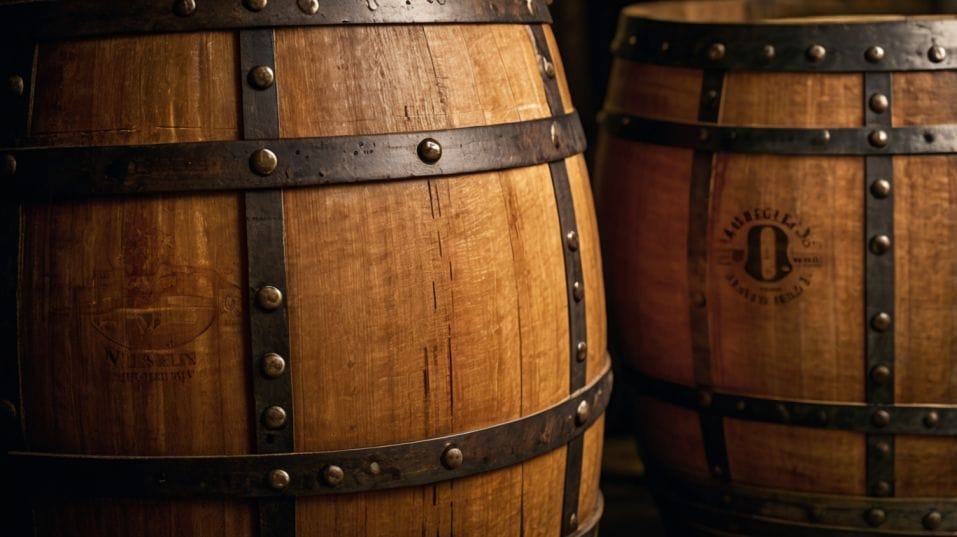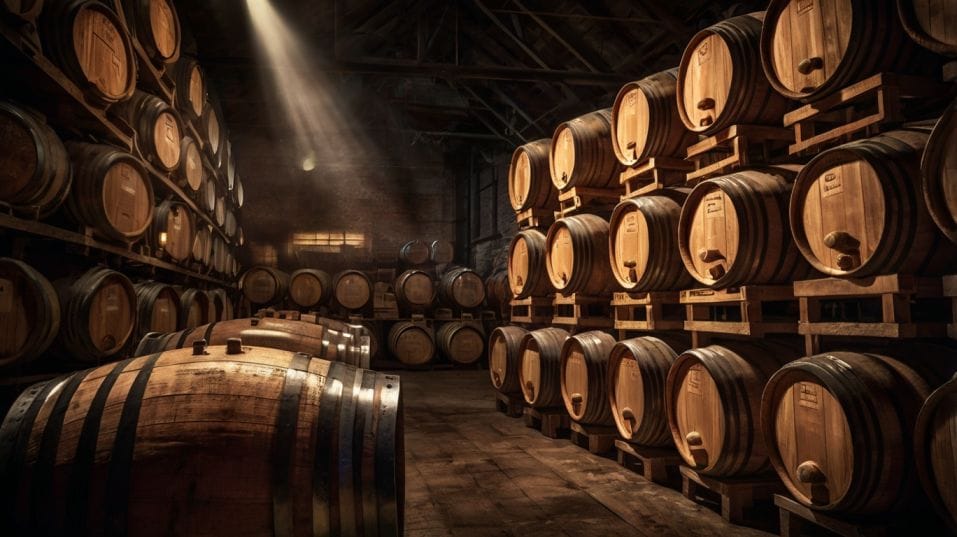American Oak vs European Oak
Curious about whiskey flavor? Learn how American and European oak barrels shape your pour—and sharpen your tasting and collecting skills.

What if the biggest flavor in your whiskey isn't the grain or the distillery—but the tree it aged in? If you're just starting to explore what makes one bottle smoother, sweeter, or spicier than the next, it's time to meet oak.
Not just any oak—two rival species that shape your pour from the inside out. Understanding American vs. European oak isn’t trivia—it’s your shortcut to tasting with confidence and collecting with purpose.
The Role of Oak: More Than Just a Container
Before getting into American vs. European, it helps to reset how you think about barrels. A whiskey barrel isn’t just storage—it’s a flavor engine.
Distillate goes in raw, bright, and unfinished. What comes out years later is transformed by oxygen, temperature, and time—but most of all, by wood.
Barrels do three major things:
- Extract flavor compounds from the oak itself (lignin, vanillin, tannins, lactones).
- Filter and mellow the spirit by interacting with charred surfaces.
- Concentrate and evolve the liquid through evaporation and oxidation.
Up to 70% of a whiskey’s final flavor profile comes from this barrel interaction. That’s not marketing talk—it’s chemical fact.
And the type of oak determines which compounds are dominant, how fast they infuse, and what kind of structure the whiskey ends up with.

American Oak: Sweet, Strong, and Unapologetic
American white oak (Quercus alba) is the dominant wood in whiskey for one reason: it works fast and tastes bold. This species is native to North America and grows with wide, porous grain.
That wide grain is crucial—it allows the spirit to move deep into the wood and back out again with every seasonal shift in temperature.
Here’s what American oak brings to the table:
- Vanillin and lactones: These are the sweet spot—literally. Vanillin gives you that warm vanilla note, while oak lactones add creamy coconut and soft woodiness. Combined, they drive bourbon’s signature flavors.
- Caramel and baking spice: Thanks to the required charring of new barrels in American whiskey, sugars in the wood caramelize and create toasty notes—caramel, brown sugar, even marshmallow.
- Low tannin: American oak has less tannin than European varieties, meaning it emphasizes sweetness and fullness over dryness or astringency.
In bourbon, these flavors come out swinging. Think about the first sip of a well-made bourbon: immediate warmth, a hit of sweetness, maybe some cinnamon or toffee. That’s the barrel talking.
If you’re collecting American whiskey, understanding oak can sharpen your decisions. Some distilleries use tighter grain oak for slower extraction.
Others toast before charring to soften the spice. These micro-decisions shift how the sweetness presents itself—and the better you know the wood, the more precise your palate becomes.
European Oak: Structured, Spicy, and Deep
European oak—usually Quercus robur—grows more slowly in cooler climates like Spain, France, and parts of Eastern Europe.
The result is tighter grain, denser wood, and a very different flavor profile. This oak doesn’t overwhelm—it simmers, stretches, and evolves.
Here’s what sets it apart:
- High tannin levels: European oak is rich in tannins, the same kind that give red wine structure. They bring dryness, grip, and a sense of backbone to the whiskey.
- Spice and bitterness: Instead of sweet vanilla and coconut, expect dark spice, wood smoke, black tea, and bitter chocolate. There’s an elegance to it—but also a challenge.
- Oxidized fruit notes: Especially when paired with ex-sherry casks, European oak produces dried fruit, leather, and nutty richness. This is where complexity blooms.
If American oak is a rock concert, European oak is a string quartet with a sharp edge.
You’ll find it most in Scotch, especially from distillers using ex-sherry butts, which are usually made from Spanish oak. That long, tannic finish and slow-building heat? That’s the wood.
For those building a Scotch collection or learning to taste with depth, European oak is essential. It teaches you to spot dryness, to track how a whiskey evolves from nose to finish, and to appreciate balance without defaulting to sweetness.
Beyond Borders: Oak in a Global Context
American oak isn’t just for bourbon anymore. It’s used across the world, including in Scotland, Ireland, Japan, Taiwan, and countless modern distilleries chasing consistency and approachability. It’s affordable, reliable, and forgiving.
European oak, meanwhile, is gaining prestige in global whiskey, especially in cask finishes—PX sherry, Oloroso, even red wine or port. These finishes lean on European oak’s ability to carry richness without washing out the base whiskey.
And then there’s Mizunara oak (Japanese), Hungarian oak, Acacia, and other more experimental species. Each brings unique tannins, oils, and aging profiles.
But at the foundation, you’ll keep coming back to the contrast between American and European—sweet vs. spicy, soft vs. structured, now vs. later.
What This Means for You as a Taster
Here’s where it gets practical. Next time you pour a dram, start with the oak. Ask yourself:
- Does it taste rich, vanilla-heavy, and creamy? You’re probably dealing with American oak.
- Is it dry, spicy, slightly bitter with a lingering finish? European oak’s in the mix.
Once you learn the signature of each oak, your entire approach to tasting shifts. You’re not just reacting—you’re decoding.
You’ll start noticing how distillers use oak to shape the entire experience. You'll spot when a finish was used to cover flaws, and when it was used to elevate something already strong.
It also sharpens your buying game. Whiskey with big European oak influence might be worth aging longer.
American oak-forward bottles might shine brightest at lower age. Knowing that makes you a smarter collector, not just a more enthusiastic one.
Final Thoughts: Build Your Palate With Wood in Mind
This isn’t trivia—it’s technique. The type of oak in your whiskey doesn’t just decorate the flavor, it defines it. American oak gives you warmth, sweetness, and speed. European oak gives you structure, spice, and slow-building depth.
You don’t need to become a walking encyclopedia. Just taste with intention. Seek out examples of each oak style. Compare. Contrast. Ask better questions. You’ll not only drink better—you’ll think better with every pour.
So go pour something right now. Try a bourbon aged entirely in new American oak next to a sherried Scotch heavy with European influence. Taste them side by side. Let the oak do the talking. Then listen carefully. That’s how you get good—fast.




